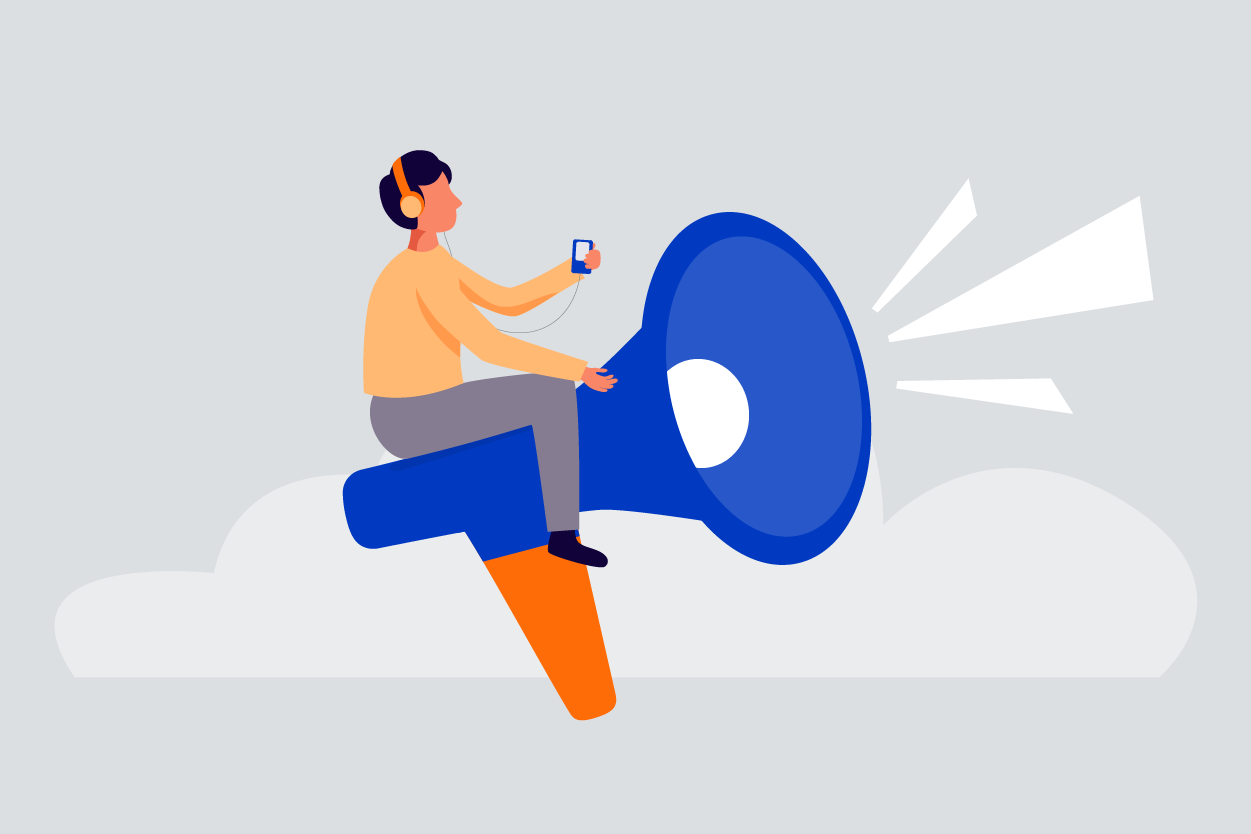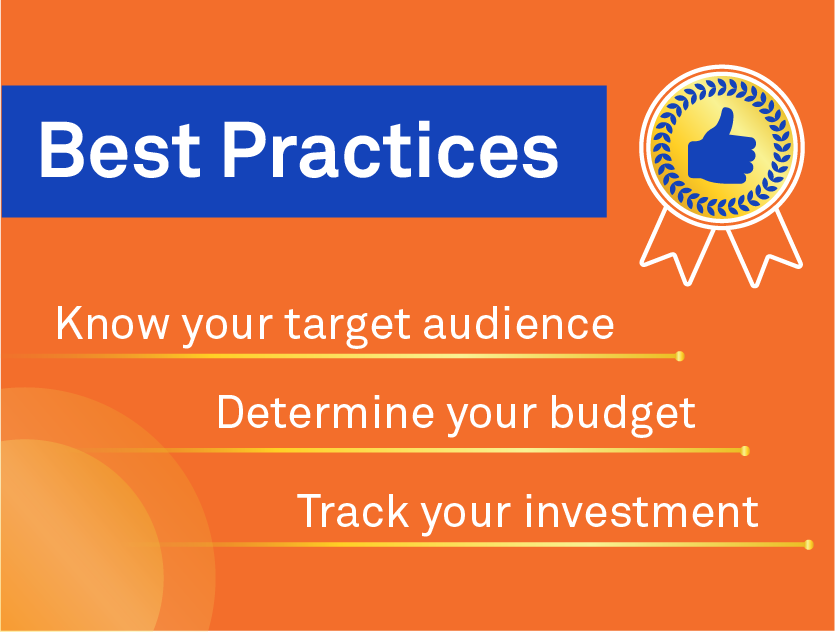

The Untapped Market: An introduction to podcast advertising

Advertising on podcasts is a new space for advertisers — here’s what you need to know.
For the longest time, advertisements appeared on billboards, radio and TV commercials to keep your brand at the top of your customers’ minds. But, there’s a new player in town – the podcast platform.
Podcasting has been on the rise over the past year. It has become one of the most preferred pastimes during the ongoing pandemic. Spotify, one of the major players in the podcasting industry, said that podcast consumption on their platform doubled during the pandemic.
And it shows no sign of slowing down — more than 80 million Americans aged 12 and above are weekly podcast listeners, a 17% increase over 2020. By inserting ads in a podcast, brands are reaching audiences in a new way to keep their products or services known and remembered.
What does reach look like, you ask? One of the most popular podcasts, The Joe Rogan Experience, is downloaded by over 190 million people in any given month, more than the number of people who watched this year’s Super Bowl (96.4 million viewers).
Yes, these statistics may not necessarily apply to podcasts in the Asian region — where data is hard to come by — but the trend remains true worldwide.
A new approach to advertising
Judging by the sheer number of podcast listeners today, it might make much more economic sense to place an ad on a podcast platform than on traditional media channels.
In fact, research by Nielsen and WARC showed that 78% of respondents didn’t mind hearing ads on podcasts; 62% even said that hearing ads on the podcast would make them consider a new service or product.
With these findings, it can be said that podcast advertising is equally effective, if not more, than the traditional advertising mediums.
Types of podcast advertising
Podcast advertising comes in two forms: dynamic insertion and baked-in ads.
Dynamic insertion
Dynamic insertion refers to ads that are served through an ad server and inserted into the podcast. It’s usually pre-recorded either by the host or other individuals.
With these, ads are inserted and replaced on-demand, meaning old episodes can have new advertisements — which also means you can always keep your podcasts up-to-date with the latest ads.
However, these ads are not as authentic as baked-in ads because they are often pre-recorded, and could be voiced over by individuals other than the host.
Baked-in
Baked-in ads are ads that are a part of the show itself. Often read live by the host, these leverage on the authenticity and personality of the host as they share personal stories or anecdotes that tie into the product.
Since the ads are woven into the podcast content in a natural way, they offer greater drag and frequency opportunity. The ad will still persist even after its initial air time — new subscribers who listen to old podcast episodes will still hear the original ad and its CTA.
However, because the original ads still play (even in podcast episodes aired years ago), seasonal campaigns or promotional codes can easily be outdated — they will not generate any revenue when new listeners listen to these old ads.
Also, baked-in ads don’t give you the ability to do A/B testing since they can’t be switched as desired, unlike dynamic ads.
Where in a podcast are these ads placed?
These ads can either be placed pre-roll, mid-roll or post-roll. Pre-roll ads are 15 to 30-second ads at the beginning of a podcast placed either before or after the host introduces the show.
Mid-roll ads are 60 to 90-second ads placed in the middle of the episode, where the host will pause the show — it may feel like a commercial break on a TV or radio show.
Post-roll ads are 20 to 30-second ads that run at the end of the show. Listeners become more receptive to going to a website or remembering promo codes as they’re still engaged with the show without necessarily keeping it top of mind.
Which platforms can ads be placed on?
Podcast ads can be placed on most major podcast platforms — here are a few key players.
Spotify
Home to over 2.2 million podcasts, Spotify is one of the largest podcasting platforms available globally. Over the past year, they have been steadily expanding their audio advertising services.
Their self-serving advertising platform Spotify Ad Studio is the primary way in which advertisers can get started with crafting and going live with their campaigns.
Most notably, they have launched Streaming Ad Insertion (SAI), a technology that allows ads to be served in real-time as the podcasts are being listened to. These ads can be tailored based on what the listeners are interested in, and includes performance metrics so advertisers can measure their ad’s impacts.
All these culminate in the launch of Spotify Audience Network, an audio marketplace that allows advertisers to connect with listeners who consume a broad range of content both on Spotify as well as from their subsidiary audio content publishers like Megaphone and Anchor.
Podbean
Available worldwide, Podbean comes with a podcast management system that not only allows you to insert dynamic ads but also choose podcast categories or the area it’s streamed in, giving you a specific and localised target audience.
It can measure the number of impressions, ad revenue, and average CPM — enabling you to track your ads effectively.
Pandora
By registering as an official Pandora advertiser in Pandora Audio Everywhere, you’ll be able to create 15 or 30-second unskippable audio spots.
What makes it different from the others is that visual ads can also accompany Pandora audio spots, contributing to the overall experience.
It collects key metrics such as impressions and CTR and the time spent with an ad, time spent on a landing page, and the number of shares in social media.
Unfortunately, Pandora is only available in the US at the moment.
National Public Radio (NPR) Podcasts
With 24 million monthly US listeners, National Public Radio (NPR) may be the ideal platform for those who want to dabble in the US market. NPR’s National Public Media (NPM) provides a series of advertising products for brands, ranging from mid-roll to brand soundscapes.
Tracking the performance of your ad will be easy since NPR has a series of measurement tools, including reach, impressions, website visits, purchase and conversion rates. This information will help you to craft a more compelling ad in the future for your audience.
Best Practices

Know your target audience
If you’re looking to place your ad on a podcast, choose one that shares your target audience.
GirlBoss, a podcast that discusses entrepreneurship and what success looks like for different people, has a huge female following which may be ideal if you’re looking to market products or services geared at women. At the same time, such a podcast will be unlikely to run an ad about razors for men.
Picking a podcast that has a target demographic that overlaps with your brand ensures your advertisement blends well into the podcast’s content, making it more organic and authentic.
Determine your budget
Podcasters usually charge advertisers under the cost per acquisition (CPA) or cost per mille (CPM) model. CPA means that you will pay a pre-determined fee for each customer that comes to your business via the podcast, while CPM means that you will pay based on the per thousand podcasts listened.
For instance, if the CPM is set at $25, and the podcast has 10,000 listeners, it would cost you $250. This approach is the most common, and the more popular the podcast, the more budget you’ll need to allocate.
Aside from this, you’ll also need to think about which type of ad you want to use, and where within the podcast will the ad be placed. These factors will impact your budget, too.
The general estimated rates are as follows: US$18 for a 15-second pre-roll per thousand listeners (or CPMs), US$25 for a 60-second mid-roll, and US$10 for a 30-second post-roll.
So, ask yourself this question, “How much money am I willing to invest?”
Track your investment
As celebrated Austrian management consultant Peter Drucker said, “If you can’t measure it, you can’t improve it”. Having the ability to measure your reach and campaign effectiveness is crucial, even in podcast advertising.
This can be done by tracking the number of visitors to a particular landing page specially made for the podcast advertisement. Use unique promo codes to know how many people used it and are successfully converted through the podcast ad you’ve paid for.
With more podcast listeners each year, podcast advertising is a rapidly growing market. Making it part of your marketing strategy is crucial to connect to your audience in a new way.
What’s better than advertising on a podcast? Making one yourself! If you want to know more, contact our podcast guru and editorial content director David Austin at [email protected] now.
Read more from Click2View:
- Branded videos don’t always have to be talking heads.
- Capture your audience with clever typography.
- The role of music and sound effects in your videos.
Sign up to our newsletter for a weekly update on the latest content marketing news. Don’t forget to subscribe to our YouTube channel too!
Click2View is Southeast Asia’s premiere full-service independent B2B content marketing agency servicing clients like Microsoft, Google, Visa, Prudential, and the Lee Kuan Yew School of Public Policy.








